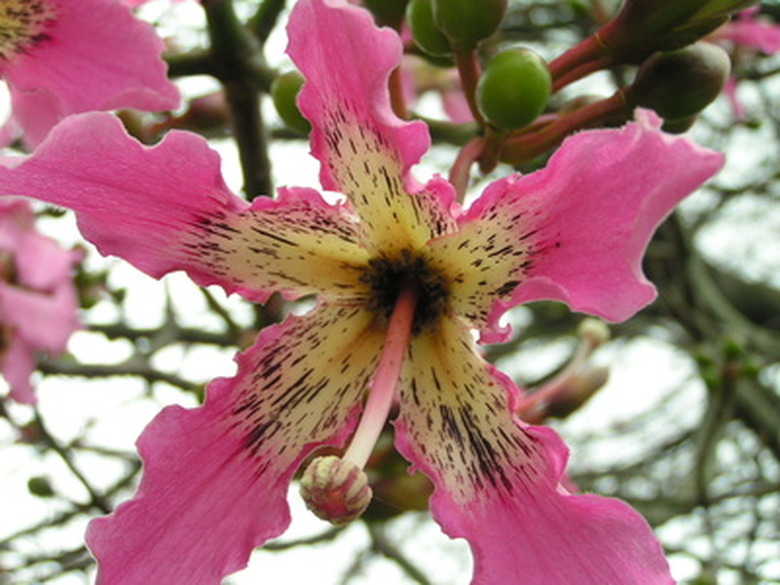How To Care For A Silk Floss Tree
Things Needed
- Organic mulch
- Tree blanket (optional)
Native to Argentina and Brazil, the silk floss (Chorisia speciosa) is a deciduous tree that can grow as tall as 50 feet at maturity. Pale green leaves will emerge from the tree in spring, and when the leaves drop in autumn, they are replaced by spectacular star-shaped blooms in shades ranging from pale pink to burgundy or purple. The blooms are replaced by seed pods filled with a seed wrapped in silky, white floss. The silk floss tree isn't cold-tolerant, and prefers warm, humid environments. Silk floss is also known as "floss-silk" tree and "'kapok tree."
Step 1
Plant the silk floss tree in well-drained soil. The tree should be exposed to full sunlight.
- Native to Argentina and Brazil, the silk floss (Chorisia speciosa) is a deciduous tree that can grow as tall as 50 feet at maturity.
- Pale green leaves will emerge from the tree in spring, and when the leaves drop in autumn, they are replaced by spectacular star-shaped blooms in shades ranging from pale pink to burgundy or purple.
Step 2
Water the silk floss tree regularly, but don't water excessively. The silk floss tree is drought-tolerant, and won't mind if the soil is kept on the dry side during the winter.
Step 3
Remove weeds around the base of the tree, and avoid planting grass within the drip line (an imaginary line where water would drip from the outermost branches). Grass and weeds will compete with the tree for moisture and nutrients in the soil.
Step 4
Apply 3 to 4 inches of organic mulch around the base of the silk floss tree, but leave 6 to 8 inches uncovered around the trunk so the mulch doesn't mound against the trunk. Organic mulches such as bark chips or dry leaves will retain moisture and deter weeds.
Step 5
Cover young trees with a tree blanket if frost is expected. Established silk floss trees can survive temperatures down to 20 degrees Fahrenheit, but only for short periods. Young trees are more susceptible to cold and should be protected.
- Water the silk floss tree regularly, but don't water excessively.
- The silk floss tree is drought-tolerant, and won't mind if the soil is kept on the dry side during the winter.
Tip
Rake up seed pods form the silk floss tree before mowing, as the woody pods can be hard on mowers. Leaving an unplanted area around the tree will help alleviate this problem.
